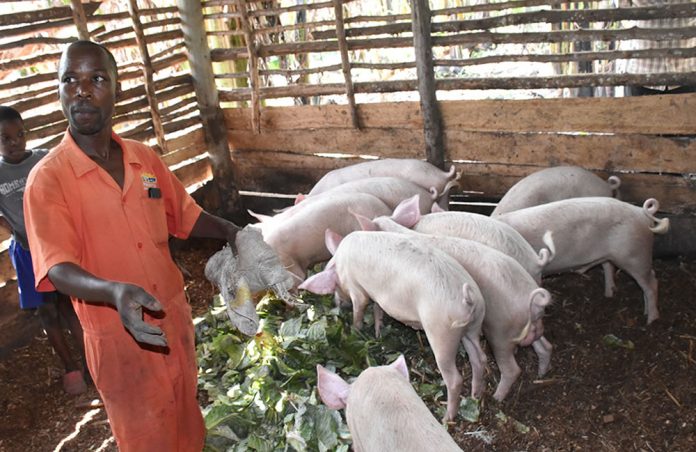Over the past three decades pig production has become an increasingly important activity in Uganda, as indicated by the change in pig population from 0.19 to 3.2 million. In 2011, Uganda has the highest per capita consumption of pork meat in Sub-Saharan Africa (3.4 kg/person/year). In Uganda there are more than 1.1 million families raising pigs, mostly as a backyard activity in smallholder households in Peri-urban and rural areas. Pigs play an important role in the livelihoods of poor families, because they are important assets, help to generate income to cover emergency needs and pay school fees, but also are means to use crop residues and kitchen left over’s, and generate manure used to fertilize high value crops. Frequently, women and children are responsible for the management of pigs, whereas men do the marketing.
The majority of pigs in Uganda, as in many other Sub-Saharan African countries, are produced by a large informal sub-sector, with limited access to technology information and services. This applies to all actors of the value chain, including farmers, traders, butchers, and retailers.
Why Pigs
Pigs can be raised in controlled or free environment, as a small- or large-scale business. But in whatever size, a prospective farmer would need inputs as to how to raise pigs efficiently and in a more productive manner.
Pigs have a number of advantages that suit rural citizens making it one of the best ways to run to in order to solve the issue of poverty.
The pig has highest feed conversion efficiency i.e. they produce more live weight gain from a given weight of feed than any other class of meat producing animals except broilers.
The pig can utilize wide variety of feed stuffs viz. Grains, forages, damaged feeds and garbage and convert them into valuable nutritious meat. Feeding of damaged grains, garbage and other home wastes reduce the stress of buying food stuffs hence spending less or no money on food.
Pig farming requires small investment on buildings and equipment. Pigs are known for their meat yield, which in terms of dressing percentage ranges from 65-80 in comparison to other livestock species whose dressing yields may not exceed 65 per cent.
Pork is most nutritious with high fat and low water content and has got better energy value than that of other meats. It is rich in vitamins like thiamin, Niacin and riboflavin. So this practice also fights Malnutrition.
Pig manure is widely used as fertilizer for agriculture farms and fishponds. Pigs store fat rapidly for which there is an increasing demand from poultry feed, soap, paints and other chemical industries.
Pig farming provides quick returns since the marketable weight of fatteners can be achieved with in a period of 6-8 months. There is good demand from domestic as well as export market for pig products such as pork, bacon, ham, sausages, lard etc.
Helping our communities realize the value in this enterprise
Uganda community, mostly the rural community is already aware of the importance of the pig enterprise! There has been limited assistance to smallholder pig farmers in Uganda on extension services, veterinary services, and feeds. We can appreciate institutions like the NAADS that have tried to do some work on pigs with smallholder farmers.

















